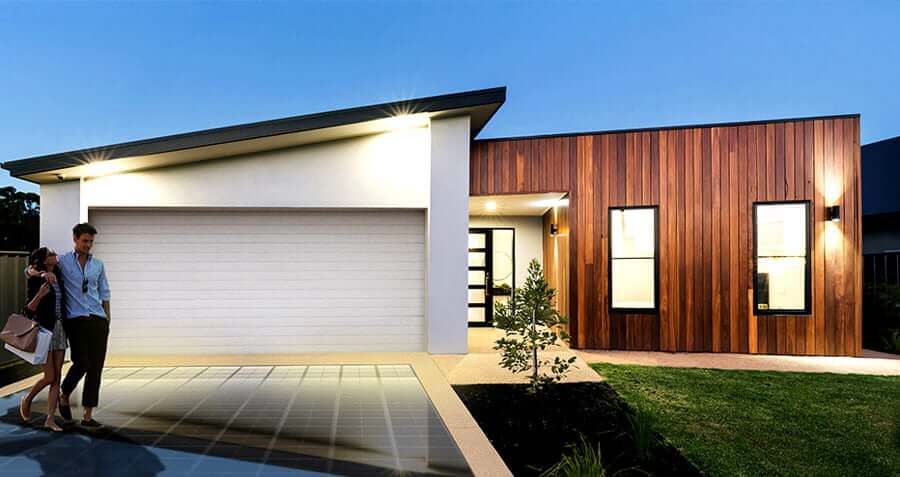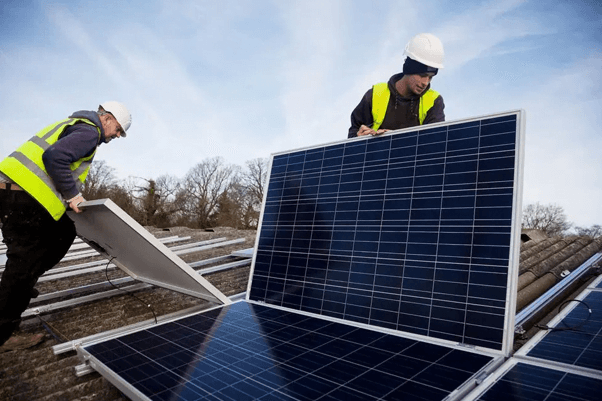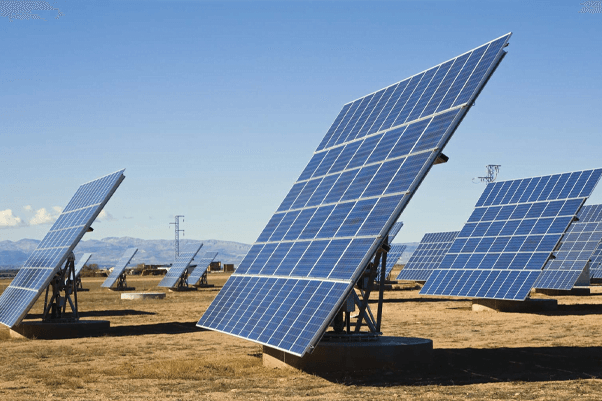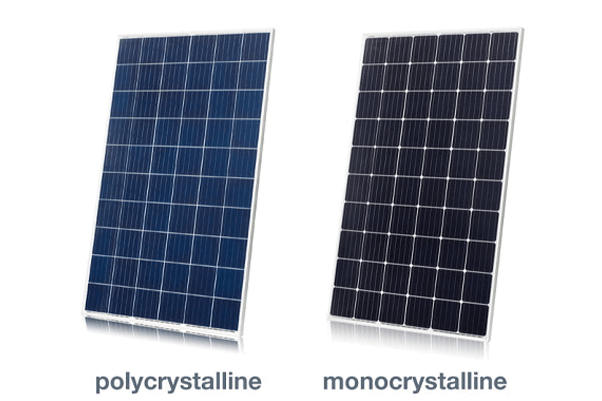Home Most Efficient solar panels
Most Efficient Solar Panels in Australia... (Top 10 picks)
Currently, the Australian market is swamped with an array of solar panel brands, making the task of finding a solar panel system with a high efficiency rating somewhat challenging.
Below, we’ve put together a table of the top ten most efficient solar panel brands in the market. Since manufacturers produce several solar panel models, the output and efficiency of each panel brand will vary.
This table shows the maximum output and efficiency of each brand.

Table of Contents
ToggleTop 10 most efficient solar panels of 2022 in Australia
Here is a table of the top 10 most efficient solar panels by brand in Australia with listed output and overall efficiency of their flagship panel.
| Brand | Output | Efficiency | |
|---|---|---|---|
| SunPower | 400W | 22.8% | |
| LG | 380W | 21.7% | |
| Panasonic | 340W | 20.3% | |
| Q cells | 360W | 20.4% | |
| Silfab | 380W | 19.40% | |
| REC Solar | 380w | 21.70% | |
| Trina Solar | 375W | 20.5% | |
| Solaria | 370w | 20.5% | |
| Jinko Solar | 390w | 20.4% | |
| Canadian Solar | 345w | 20.2% | |
Average solar panel efficiency
From the table above, the average efficiency rating of solar panels ranges from 15% to 22%. Nonetheless, very few solar panel brands lie above 20% efficiency. Only the top brands in the market were able to hit the 22% efficiency mark and, in some cases the highest efficiency solar panel, 23%.
This difference in solar panel efficiency isn’t solely determined by the brand, but also by the material of the panels; its placing and orientation, and temperature.

Is it better to have fewer, high efficient panels?
It depends on your roof space. Homes with a large space can invest in several low-efficiency solar panels, which are cheaper but will still meet the home’s power demands.
High efficient solar panels are usually quite expensive compared to regular solar panels and, thus, may fit into your budget. Nonetheless, if you have limited roof space, getting high efficient solar system will be more beneficial long term.
The efficiency of solar panels is affected by many factors, and so, having a more efficient solar system may not always mean that it’s better.
Besides the panels’ efficiency ratings, look into other factors such as their location, roof angle and orientation, and shading.

Are solar panels getting more efficient?
Yes! The solar panel industry is enjoying huge advancements and innovations with more energy experts working on improving solar panel efficiency.
Barely a decade ago, the efficiency of solar panels was estimated at 12%. Today, some of the leading solar panel manufacturers have achieved efficiencies of up to 23% – almost 50% improvement! And even though most solar panel brands are still at 15%-17% efficiency, these figures are only expected to go higher.
Additionally, scientists are now working on new panel solar materials, such as the use of perovskites, a semiconducting material, to create a new generation of thin-film solar cells.
All this research is going on drastically changing the efficiency of solar panels. Soon, the efficiency of solar might hit the 30% – 40% mark.
Advantages and disadvantages of high efficient solar panels
Normally everything has its pros and cons or advantages and disadvantage. The solar energy system is no exception. I have made some research for you so you will have a clearer picture.
Advantages of high efficient solar panels
The biggest advantage of high efficient solar panels is that they can generate a lot of electricity, even during short daylight hours. For example, assume you have two solar panels, one with a 14% efficiency and the other 21% efficiency.
If the two panels are placed under the same sunlight conditions, the 21% efficient solar panel will produce at least 50% more power than the 14% panel.
This means that you’re more likely to have enough power for your home and surplus for the feed-in tariff with more efficient solar panels. Additionally, these panels can generate enough power for homes with little roof space and poor sunlight penetration.
Disadvantages of high efficient solar panels
While having high efficient solar panels can increase your electricity conversion, it’s not always the best solution.
For one, high-efficiency solar panels are very expensive compared to regular panels. It’s much cheaper for homeowners with adequate roof space to use more regular panels than a few high-efficient ones.
Additionally, just because the solar panel has a high-efficiency rating doesn’t mean it’ll generate more for you. Other external factors in your environment may reduce the panels’ efficiency and delay the return on your investment.
How can I increase the output of my current solar panels?

There are many things that could affect the output of your solar panels. And so, you have to keep thinking of ways to improve and maintain their output every day. Some of the easiest ways to do this include:
- Use a solar tracker – Solar trackers rotate the solar panels throughout the sky following the sun to ensure that your panels always receive direct sunlight.
- Change your solar panel orientation – For maximum solar output in Australia, you need to have your solar panels tilted to face North. Panels facing East or West lose nearly 10-20% efficiency due to the reduced sunlight exposure. Panels facing North East or North West are also good.
- Use solar concentrators – You can also increase your solar panels’ solar output using light concentrators like mirrors or a Fresnel lens. Concentrating light directly onto the panels can increase the output by almost 50%. However, you have to be cautious not to overheat the solar panels.
- Try solar cell glazing – Solar panel output can also increase if the solar cells are protected from elements such as snow, hail, and rain. Experts recommend using a low-iron or polycarbonate glass to reduce the surface reflections and improve transmissivity.
Are solar panels efficient enough, or should I wait?
Solar panel efficiency is improving by the day. Every few months, one solar panel brand will introduce a new solar panel to the market that’s more efficient than its predecessor.
The truth is, solar panels are not efficient enough. At averagely, 15-18% efficiency, there’s still a lot of room for improving the panel efficiency. But this doesn’t mean you should expect a drastic rise in solar panel efficiency in the future.
Therefore, if you are thinking of going solar, you don’t have to wait. If you choose solar panels with relatively good efficiency now, it’s output won’t disappoint you – even when more efficient panels hit the market.
Are high efficient solar panels worth the extra cost?
Yes and No. If you have plenty of roof space facing north, getting highly efficient solar panels won’t matter. In any case, it’ll cost you much more than what you’d get for the same output with regular meetings.
However, if you have a small roof space, getting highly efficient solar panels will help you generate enough energy for your home with fewer solar panels.
The efficiency of solar panel calculation
To calculate your solar panel system’s efficiency, you’ll have to first multiply the incident radiation flux (amount of sunlight in your area) by the surface area of your panel (in square meters).
Next, divide it by the maximum wattage of your panel and multiply the result by 100. Your answer is the efficiency rating.
Solar panel efficiency by type
Another key factor that affects the efficiency of solar panels is the type of panel you’re using. The two major solar panel types in the market are monocrystalline panels and polycrystalline panels.
Monocrystalline VS polycrystalline solar panel efficiency
In general, monocrystalline solar panels are more efficient compared to polycrystalline solar panels. This is because the monocrystalline panels use single-crystal silicon, which creates more room for electrons to flow in the panels. Polycrystalline panels use multiple crystal silicon, which restricts electron movement.

Latest solar panel technology - five picks for 2022
The energy production market tends to revolutionise and new solar panel technologies will have a significant role in that.
I will present you with 5 exciting solar panel technologies. Some of them are still in the development phase and some are already on the market.
#1 Floating solar farms
Floating solar farms, aka floatovoltaics, are photovoltaic solar power systems created for floating on reservoirs, dams, and other water bodies.
One good thing with floating solar farms is that, unlike land-based photovoltaic panels, they can generate a huge amount of electricity without using expensive real estate. Some research showed that the power production with floatovoltaics is greater up to 10% due to the cooling effect of the water.
#2 Building-integrated solar technology
Building-integrated solar technology (BIPV) blends into building architecture seamlessly in the form of facades, roofs, skylight systems, and curtain walls. Unlike traditional solar systems, BIPV can be aesthetically appealing rather than compromise a building’s design.
If the photovoltaic PV cell is installed as a building material it will act as an energy-generating device while allowing penetration of the natural lights just as conventional architectural glasses.
When implemented on building’s facades, BIPV provides several benefits:
- Increased energy efficiency;
- High thermal and sound insulation;
- Zero Carbon footprint;
- Decreased operation and maintenance costs;
- Free and clean power output from the sun.
#3 Solar skins
Solar skins are the new era of solar because you don’t have to sacrifice your style with them. With solar skins the design possibilities are endless.
The manufacturers of the solar skins are testing this technology in National Renewable Energy Lab to increase its efficiency.
The main advantage of solar skins and the main reason they are considered as the new era of solar is their ability to fit 100% into the environment where they are placed.
However, the disadvantage of solar skin is that they are at least 10% more expensive.
#4 Solar fabric
This is a futuristic idea that is not impossible to become a reality in the near future.
Researchers are trying to include solar power in every fabric. The fact that solar energy is available all around us, has prompted researchers and scientists to think about this.
Solar fabrics could become reality if solar filaments can be integrated into clothes we wear every day and that way provides the energy for our need, like charging phones, while we walking.
Solar fabricated household clothing can help you save on solar panel mounting and installation costs.
#5 PVNB - Photovoltaic solar noise barriers
Noise that comes from traffic on the highways has always been and always will be a concern for every state.
US Department of Energy came up with an idea to merge noise abatement with sustainable power generation. In fact, more than 3000 miles of traffic noise barriers are built all over the States.
Noise barriers were constructed with the aim of designing cost-effective barriers that efficiently perform noise abatement functions.
Most efficient solar cell
Many scientists in the solar panel industry are working tirelessly to improve solar cell efficiency because of the efficiency of the solar cell matters.
The efficiency of the solar cell determines the amount of energy that can be harvested from the sun. The average efficiency of commercial solar panels is 20%. These solar cells are made of silicon.
Solar cell technology scientists are facing the challenge of finding a material that will absorb more energy from the sun and thereby improve the efficiency of the solar cell and the efficiency of the solar panel system.
FAQs
Are solar panels a good investment in 2022?
Yes. Going solar not only cuts down your bills, it also helps reduce your carbon footprint in the environment. Solar panels are also a great investment and have a payback period of 3-5 years, after which you can enjoy their benefits for up to 30 years.
What is the best solar system for home Australia?
LG solar and SunPower have so far been ranked as the best solar panel brands in Australia. Their solar panels were among the first in the country to hit over 21% efficiency.
Is it possible to have 100% efficient solar panel?
According to engadget.com scientists have found a path to create solar cells that are able to capture 100% of the sunlight energy that reached them. Researchers at National Renewable Energy Laboratory (NREL) stated that “the extra solar efficiency comes from quantum dots which harvest energy that would otherwise be lost as heat”.
Table of Contents
Toggle




